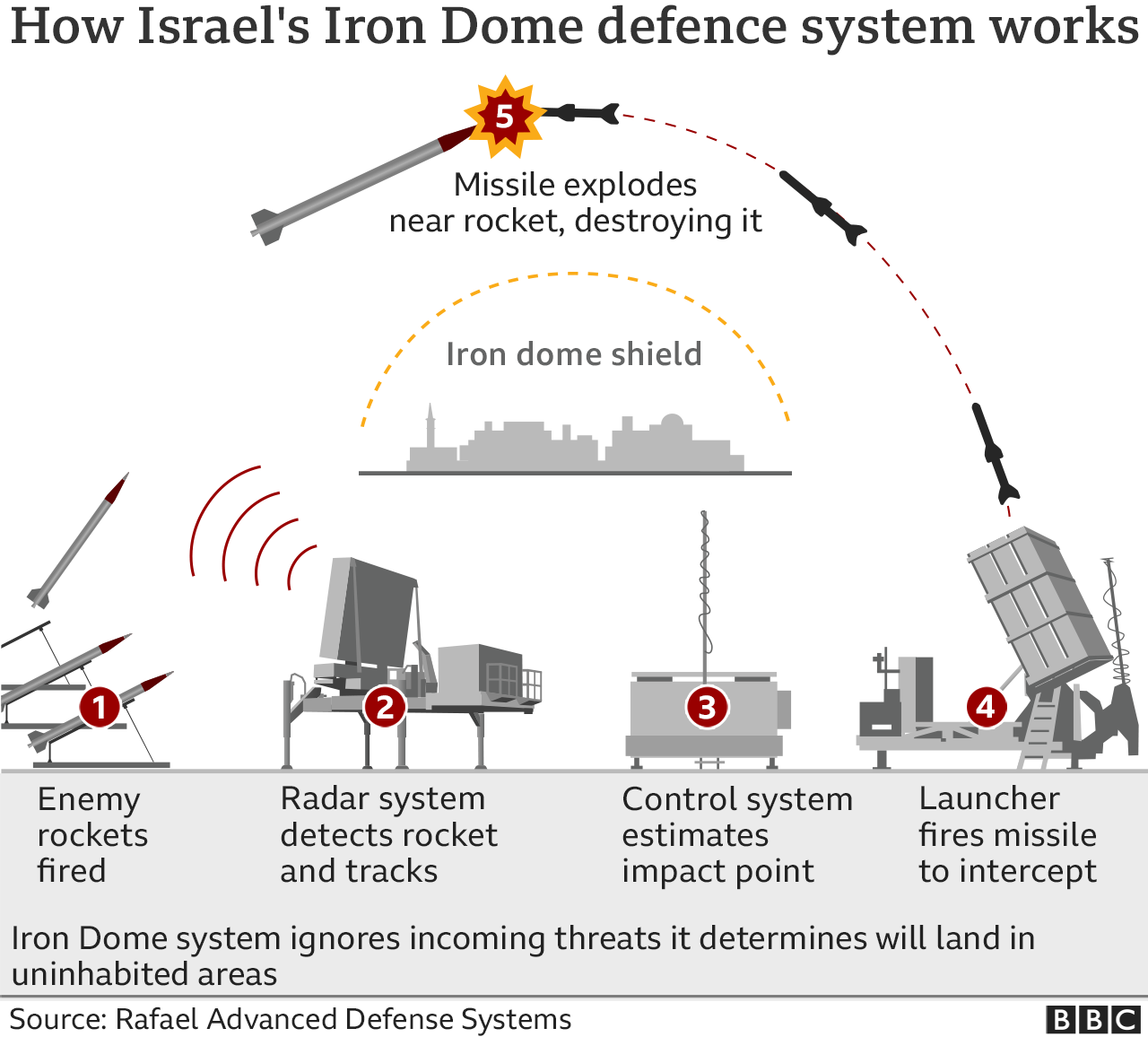Some of the worst violence seen in years in Israel and Gaza has led to dramatic images of confrontation across the region’s skies.
More than 2,000 rockets have been fired towards Israel by Hamas and other Palestinian militant groups in five days.
But about 90% of the rockets have been intercepted by its flagship Iron Dome missile defence system, according to the Israeli military.
The Iron Dome was specially designed to protect against a range of incoming short-range threats.
The system has its roots in the war Israel fought with Lebanon’s militant Hezbollah movement in 2006, when thousands of rockets were launched into Israel – causing huge damage, mass evacuations and dozens of deaths.
After that Israel said a new missile defence shield would be developed.




Created by Israeli firms Rafael Advanced Defense Systems and Israel Aerospace Industries with some US support, the Iron Dome became operational in 2011.
Considered among the most advanced defence systems in the word, the Iron Dome uses radar to identify and destroy incoming threats before they can cause damage.
The all-weather system was specially designed to help combat shorter-range rudimentary weapons like the rockets fired from Gaza.
The Iron Dome was expensive to develop but manufacturers say it is cost-effective because of technology it uses to differentiate between missiles likely to hit built-up areas and those that won’t. Static and mobile units only launch interceptor missiles to shoot-down anything interpreted as dangerous.
A decade since the Iron Dome became operational, Israel now has 10 batteries deployed across the country, each with three to four launchers that can fire 20 interceptor missiles.
“The number of Israelis killed and wounded would be far higher if it had not been for the Iron Dome system, which has been a life saver as it always is,” Israeli military spokesman Lt Col Jonathan Conricus said this week.
But some analysts say the intensity of recent barrages from Gaza suggests militant groups are attempting to overwhelm the Iron Dome – raising concerns about the system’s possible limitations.
- BBC
FAKAMATALA FAKATONGA
Viki’i e ngāue lelei ‘a e mahafu tau malu’i ‘a ‘Isileli kuo ui ko e ‘ato ‘ukamea pe iron dome ‘a ia ne hanga ‘e he me’atau ni ‘o fakapaaki e ngaahi lōketi ne fana atu ‘e he Hamas ‘o ta’e’aonga pe ia he ‘ea’ ‘ikai lava a’u ki loto ‘Isileli. Kuo taku ko e taha ‘eni e ngaahi mahafu tau malu’i fakapooni taha ‘i māmani. Ko e fo’i lōketi ‘e 2000 ne fana’i atu ‘e he Hamas ki ‘Isileli ‘i he ‘aho ‘e 5 kuohili’. Ko e 1800 ne movete pe ia he ‘ea’ hono fakafepaki’i ‘e he mahafu ‘ato ‘ukamea’ pea ni’ihi tō ia ki he ngaahi feitu’u ‘ikai nofo’i. Kuo si’i ‘aupito ai e mate ‘a e kau ‘Isileli mo e maumau he tau ko eni’ fakahoa ki he’ena tau he 2014 ne lahi ai e mate mo e maumau he ngaahi loketi ne hao atu ki loto ‘Isileli’. Ko e me’atau ‘eni ne ngaohi pe ia ‘e ‘Isileli pea tokoni’i ‘e ‘Amelika.
